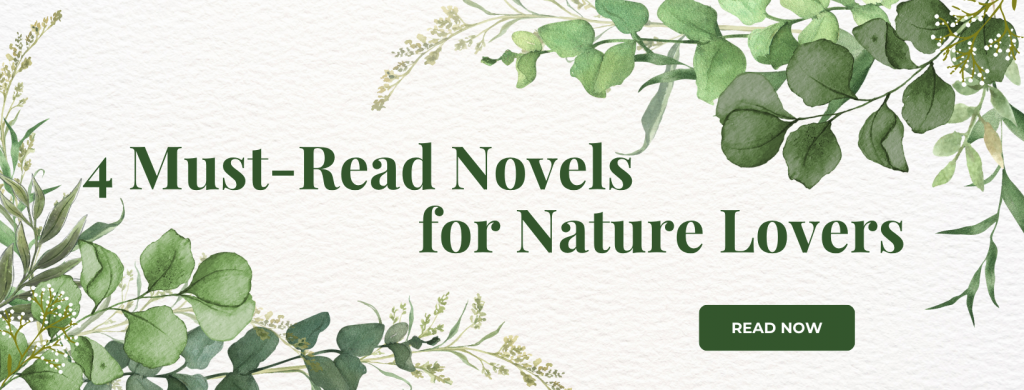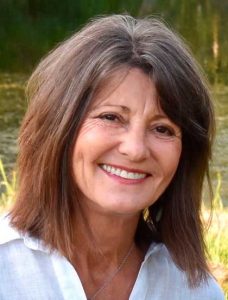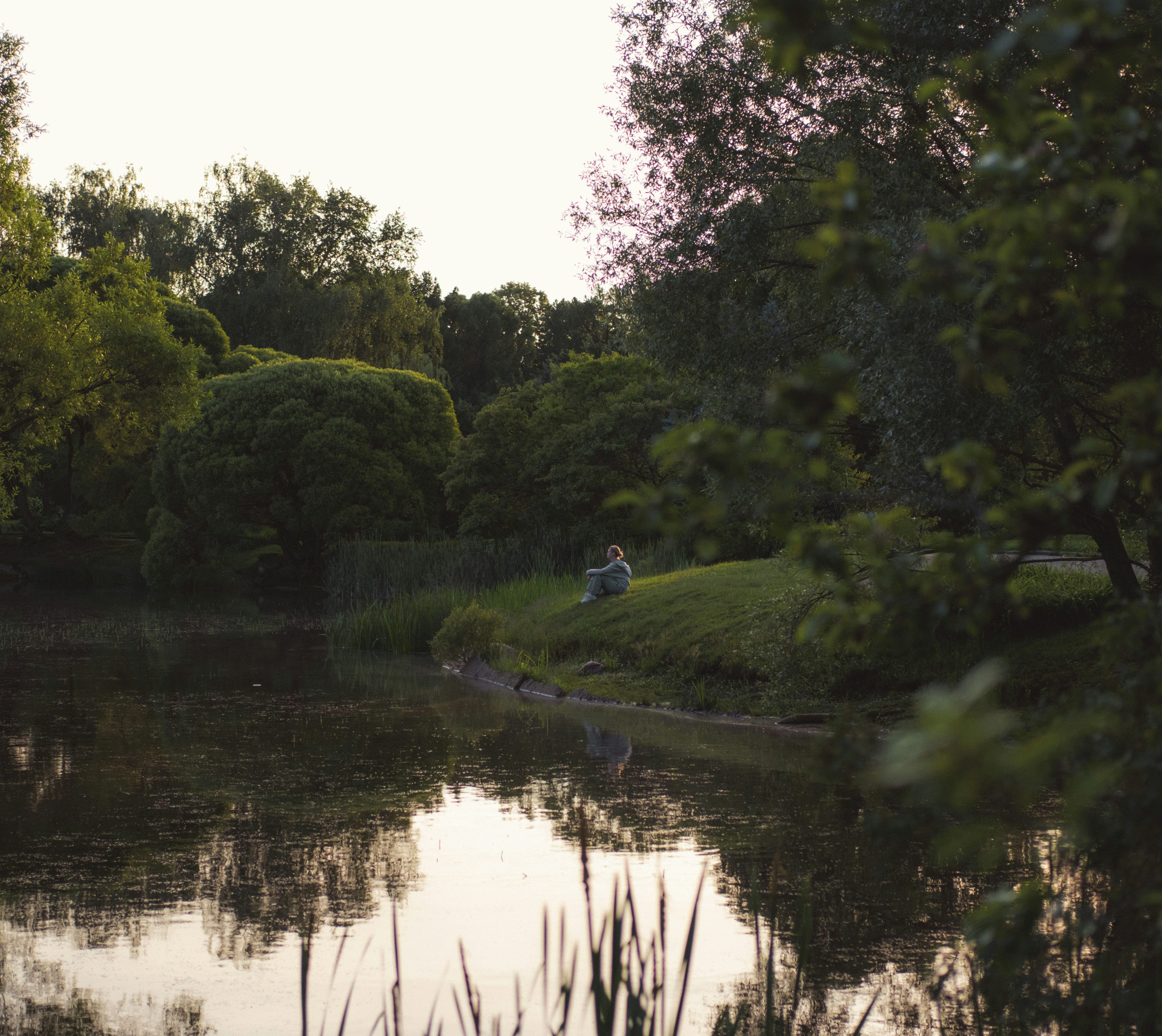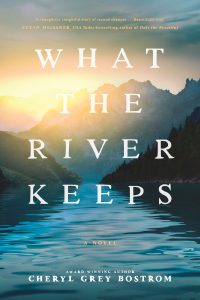Bestselling author Cheryl Grey Bostrom is known for her deep love of nature and the Pacific Northwest—both of which often take center stage in her novels. And What the River Keeps is no exception.
We connected with Cheryl about how the Elwha River in Washington State plays a vital role in the story’s setting. Discover the meaningful story this river holds, both within the book and in real life.
In the novel, Hildy, a reclusive wild-fish biologist, moves back home to be close to her ailing mother and to help restore her beloved Elwha River. As she slowly grows closer to a grieving local carpenter, troubling pieces of the past start to surface and Hildy needs to decide if she can overcome painful secrets and dismantle the walls that have kept her from freedom.
If you want to learn more about Cheryl’s novel, start reading the first chapter of What the River Keeps, or find your own copy in softcover, e-book, or audiobook at a retailer near you.
What the River Keeps is set in the beautiful Pacific Northwest—as are all your novels. Can you tell us a little bit about why you’ve chosen this region?
For much of my life, I’ve studied, photographed, and lived here in the Pacific Northwest, which speaks to me through all my senses. It was only natural that I decided to set my stories in this land I’ve long loved; I want my imagination to dwell here as I write.
And so, for the setting in my first novel, Sugar Birds, I chose a northwest riparian forest to hide and nourish young Aggie. In Leaning on Air, I picked the Snake River and the vast, rolling hills of Washington’s Palouse to frame both the fracture and mending of Celia and autistic Burnaby’s unusual love story.
In this newest novel, What the River Keeps, I returned protagonist Hildy to her childhood home in the Elwha Valley to confront her mysterious past. Seven miles from where I grew up, it’s a rugged Olympic National Park watershed, located in wilderness that both blessed and haunted me as I came of age—as it does Hildy.
In the story, readers meet Hildy Nybo, a biologist working alongside a team of scientists who oversee restoration of the Elwha River. What is the significance of the river and why did you want to write about it?
Until the early twentieth century, all five species of Pacific salmon swam and spawned, grew and died along the entire forty-five-mile length of Washington’s Elwha River. For thousands of years, Indigenous peoples had built cultures and livelihoods around the river and those fish, which grew to legendary size in their sea-dwelling years, then returned to spawn in enormous numbers.
Enter Thomas Aldwell. By 1910, the Toronto entrepreneur had finagled the construction of a hydroelectric dam five miles from the river’s mouth. While the Elwha and (a few years later) Glines dams brought much-needed power to the primitive Olympic Peninsula, those dams—built without fish ladders—severed fish passage, interrupted sediment and nutrient movement between mountains and sea, compromised wildlife and forests, and devastated the Lower Elwha Klallam Tribe.
Persisting all the way to the Congress, the Klallams lobbied for their river’s freedom until, in 1992, the Elwha River Ecosystem and Fisheries Restoration Act was signed into law. That law authorized the Secretary of the Interior to acquire both of the dams and to restore the Elwha and its native, sea-going fisheries. Though it took another two decades to begin, the largest dam removal in US history ensued, and the river began to heal.
Why write about it? It’s a staggering story of redemption and hope—and a mirror of both our human condition and our potential to heal. Who doesn’t need stories like this?
Too, from what I read in Genesis, I believe stewardship of creation is an ongoing call and commission. The Elwha’s travails and recovery showcase our connectedness to nature’s ecosystems and display how, based on our choices, those systems either suffer or flourish. I pray readers will emerge from the novel with fresh awareness of, and care for, the created world.
How does Hildy’s journey parallel what is happening with the Elwha River in the story? What do you hope readers will glean from Hildy’s experiences in the novel?
The Elwha’s story matches Hildy’s step for step! Control and deception have trapped them both in long bondage—the river behind concrete barricades; Hildy behind a barrier of lies and confusion. As the physical dams crumble, the ecosystem begins to recover. Likewise, as Hildy’s dark strongholds disintegrate, truth and peace replace her inner turmoil, and she too finds healing . . . and real love.
I hope that as readers recognize those parallels, they’ll grow in insight. I also pray that the natural world revealed on these pages will draw them nearer to our Creator Christ by illustrating not only his majesty, but how he redeems and restores those he loves.
Just for fun: If a reader who’d never been to the Pacific Northwest visited Hildy, where would she take them to get a glimpse of the wonder and beauty of the natural world she loves so much?
Hmm. By the time Hildy would be showing a reader around, she’d have reached the end of this tale, and responsibilities would likely keep her close to home. I’m guessing her non-negotiables would be a sandy walk along the Dungeness Spit nature preserve and the curvy drive to panoramic mountain views on Hurricane Ridge. If time allowed, they’d row on Lake Crescent, wander the Hoh Rain Forest, and scramble old-growth driftwood and wave-worn boulders on beaches near LaPush.
And of course they’d visit the reborn Elwha estuary. “Bring your backcountry gear next time,” I think she’d say. “I’ll take you upriver.”

Hildy Nybo is a successful biologist, her study of the Pacific Northwest’s wild fish both a passion and a career. But behind her professional brilliance, Hildy’s reclusive private life reflects a childhood fraught with uncertainty. Despite her father’s love and her mother’s sympathy, she grew up constantly losing even her most cherished belongings, unable to recall where she misplaced them. Haunted by the confusion of those early years, she now records her life in detailed diaries and clings tightly to memory-prompting keepsakes.
Then her mother’s health fails, and Hildy accepts a job near her childhood home, joining a team of scientists who will help restore her beloved Elwha River after the demolition of two century-old dams. There Hildy settles into one of the cabins on her family’s rustic resort—a place she both loves and dreads, for reasons she can’t fully explain.
When local artist Miranda Rimmer rents an adjacent cabin for her pottery studio, Hildy shrinks from such a close neighbor. But then Miranda’s carpenter brother, Luke, shows up to help with construction and captures Hildy’s attention. Now a few years beyond a tragedy that brought him to his knees, Luke recognizes a kindred soul in Hildy, and they build a relationship that dismantles the walls Hildy’s built to keep people out. As troubling pieces of the past surface, Hildy dares to wonder if she can banish the shadows that have burdened her and follow her river’s course to freedom.

Author Cheryl Grey Bostrom writes surprising fiction that reflects her keen interest in nature and human behavior. Combined, her critically acclaimed novels Sugar Birds and Leaning on Air have garnered more than two dozen literary awards, as well as international bestseller and Book of the Year honors. A columnist, photographer, and avid birder, Cheryl and her veterinarian husband live in the rural Pacific Northwest that inspires the settings for her stories. Connect with her at cherylbostrom.com or cherylgreybostrom.substack.com.



